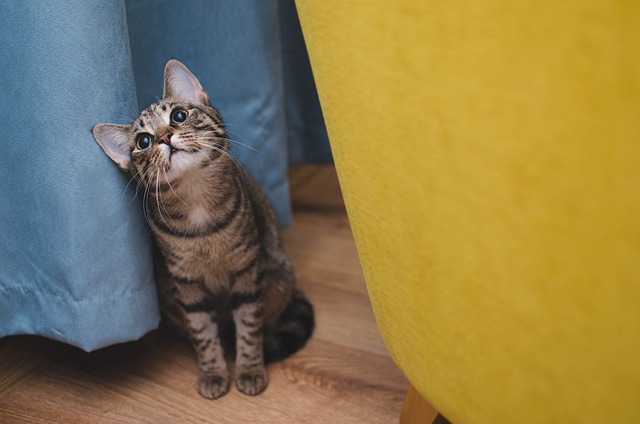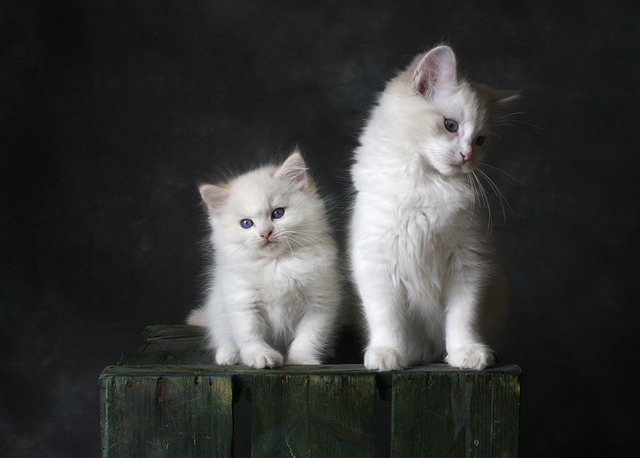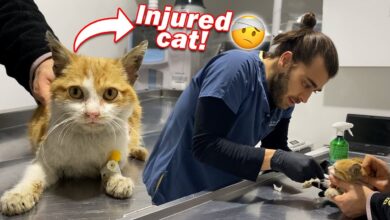
1: Make feeding time more interesting
Feral cats have to hunt for their food, which is both mentally and physically challenging. There are several ways to make feeding time more stimulating for your cat. My favorite method is to hide healthy treats or spoonfuls of dry food in different areas of the room. I remember where I hid the food so I can check afterwards to make sure he found it all. Once the food is hidden, I let my cat enter the room and, since we do this every morning, he instinctively runs in and starts “hunting”.
I also like to buy interactive treat and food dispensers. Your cat has to solve problems to access his meal. My favorite is the SlimCat from PetSafe, which is a ball with holes that you fill with dry food. When they push it with their paws and nose, the food falls out. This slows down their feeding and provides both entertainment and exercise.
2: Grooming
Regular grooming not only keeps your cat’s coat healthy, prevents matting and reduces the amount of hair that ends up all over the house or in hairballs, but it also gives you the opportunity to spend some quality time with your cat. Many cats enjoy being groomed, especially if they’ve been groomed since they were young, and they appreciate the attention and care that comes with a brushing session. If you and your cat have a close bond, don’t be surprised if she tries to groom you back!
3: Play
I recommend buying fishing rod type toys, as they drive most cats crazy. It’s usually a fishing pole with a snake, bird or mouse-like object at the end that you can run across the floor or fly through the air. Really encourage your cat to run around, release his pent-up energy and pounce on his victim, so he can express his inner hunter.
4: Catnip
While no one knows for sure whether cats need grass or not, it’s a good idea to at least give them the opportunity to eat it if they want to. Grass contains fiber, which can aid in digestion, and the roughage can help move swallowed hair from the grooming process into the digestive tract. Grass can also induce vomiting, which can help cats expel hairballs. Although cats cannot digest grass, beneficial vitamins and minerals may escape from its juices. Some cats just seem to enjoy the crunchy, sweet taste of the grass! You can either buy it already grown or grow it yourself.
5: Litter boxes
Follow the “1 each, plus 1” rule, which means that each cat should have its own litter box, and you should also have a spare one. Make sure the litter box is in a quiet area, away from where they eat. Although the litter box should be cleaned daily, buy a spacious litter box so they don’t have to step on old feces when they use it. Ideally, it should also have a lid for added privacy. Most cats prefer unscented, fine-grained litter.
6: Scratch posts
As with litter boxes, follow the “1 each, plus 1” rule. Cats mark their territory by scratching, using scent glands on their paws, and should not be expected to share the same scratching post. Cats mark their territory by scratching, so make sure the scratching post isn’t tucked away in a corner, as they may not use it. Cats like to stretch when they scratch, so make sure the scratching post is high. They also like the post to offer some resistance when they scratch, so it should be sturdy and strong. You can also rub catnip on it to pique their interest.
7: A variety of places to rest
You can get creative with this tip. Cats like to be up high, so build corridors around the perimeter of the room and cat shelves along the walls. Not only do they give your cat a place to rest, but they also make the environment more interesting. Window perches are also fantastic because they allow your cat to take a nap, wake up and participate in bird watching. In fact, a window is your cat’s version of a television and will keep him occupied for hours.
8: DVDs for cats
Yes, it’s true. You can buy DVDs that have been designed for cats. They tend to feature little creatures running and flying around on the screen. Some cats aren’t interested in DVDs, while others love them!
9: Clicker training
Many cats respond very well to being taught tricks. Not only does clicker training provide your cat with great mental and physical stimulation, but the training sessions also allow for personal bonding.
10: Take your cat outdoors
If your cat is looking longingly out the window and you want to take her outside, but only under your supervision, you can teach her to walk on a leash or harness. The first few weeks should be spent indoors so your cat can get used to the harness first, then the harness and leash.
Kate McMahon, veterinary student and creator of Kate’s Pet Corner.






